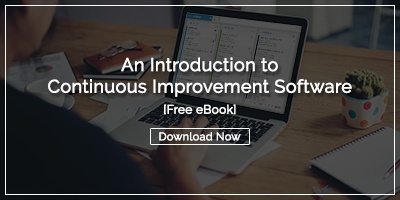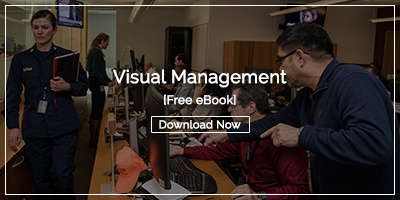
The internet is full of free Kanban Excel templates that you can download. That’s not surprising because the format of a Kanban board can be very simple, and Excel is attractive because most people know how to use its basic features, and everyone in the company probably already has access to it. Setting up a Kanban board in Excel and emailing it out to everyone is easy. That’s why we aren’t surprised that so many organizations start out on this road.
Very few, however, reach their goals with this approach. Here’s why.
Excel Isn’t Designed for More than One User at a Time
If you have only one person responsible for an entire value chain, Kanban for Excel will probably work just fine, but that is almost never the case. Most business processes, whether in software development, product production, construction projects, or emergency room care, involve multiple people, sometimes crossing several operational areas. Kanban boards are meant to communicate and control the flow of work in progress from start to finish. While cloud technology makes it possible for more than one person to edit a spreadsheet, Excel was never designed as a tool for multiple simultaneous users. If you’ve ever had three or four people working on a spreadsheet at the same time, you know the perils of conflicting versions and quality control.
Version Control is Hopeless
If I complete a spreadsheet template, save it on my machine and email it to four people, how many copies of that spreadsheet now exist? Six. (One on my hard drive, one in my outbox, and the four I sent.) If one of the people I sent it to saves it, makes a change and sends it back, we’re up to 12, and now they aren’t all the same. What if 2 people make changes to the original file? Which one should the third person modify? Yuck. It’s easy to see why it doesn’t take long before no one trusts the data or knows which file to use.
You Can’t See Who Changed What
Even if you are able to overcome the versioning problem, it is impossible in Excel to see who changed what data, when they did it and why. While the Kanban board itself is a snapshot of the current state of work in progress, the practice of Kanban entails much more. It is a conversation about how to control and improve the process that includes everyone involved. Visibility into the history of the process helps teams make better decisions and to find ways to enhance flow. Excel is not designed to give you that.
What about Google sheets? You might ask. They offer an online option with some version control but still lack the ability to share information about how work has moved through the pipeline over time.
There are No Workflow Capabilities
You can certainly stick a due date into a cell in a Kanban Excel template, but what happens when it comes and goes? Nothing. Excel has some unbelievable capabilities for creating formulas and manipulating data, but it won’t alert you if you miss a critical milestone. It won’t automatically notify you if someone sticks your name beside a new task, it won't remind you of upcoming due dates, and it won't notify leaders if work is falling behind.
Mobile Users are Left Out
It is technically possible to open a spreadsheet on a mobile device, but have you ever tried it? Depending on how the file is designed, you may be able to read it - but editing a spreadsheet on an iPhone is almost impossible. The modern workforce is mobile. In order for Kanban boards to be effective, people must be able to make changes from wherever they happen to be.
What's Better Than Kanban Excel Templates?
So, what’s the better solution than managing Kanban boards in Excel? Our clients have been successful with improvement software that includes digital Kanban boards. The best solutions have the following capabilities.
Visual Management
Like an Excel template or even a physical Kanban board, Kanban software displays the current state of work. Unlike the other options, however, it allows you to drill into each item to review the history, notes, and associated documents. Interruptions in the flow of work are immediately apparent and improvement cycles to resolve them are managed right in the same tool.
Alerts and Notifications for Active Engagement
Kanban software includes active alerts and notifications to keep everyone apprised of new assignments, missed deadlines, unexpected process results and inquiries from team members.
Impact Reporting
Organizations use Kanban to optimize process flow, produce faster results, manage improvement projects, and achieve other business goals. The best Kanban software has the ability to measure the results of each project or process against key performance indicators. Knowing the short and long-term impact of improvement is the surest path to engagement and executive support.
User Roles and Permissions
Each person has different needs for reviewing Kanban data, the solution you select should allow the system to be set up to show everyone exactly what they need. Leaders may need access to multiple boards, whereas individuals may need to review the work of just one team or even one specific process.
Mobile Applications
We mentioned the challenges of Excel on mobile devices. The right Kanban software makes it possible to both view and edit data on a mobile phone or tablet. This ensures that everyone has 24x7 access to your boards.

Managing Kanban boards with Excel templates is tempting, but the drawbacks are too significant to ignore. If Kanban is vital to your organization, it makes sense to invest in a solution that was designed specifically to support it.



Add a Comment